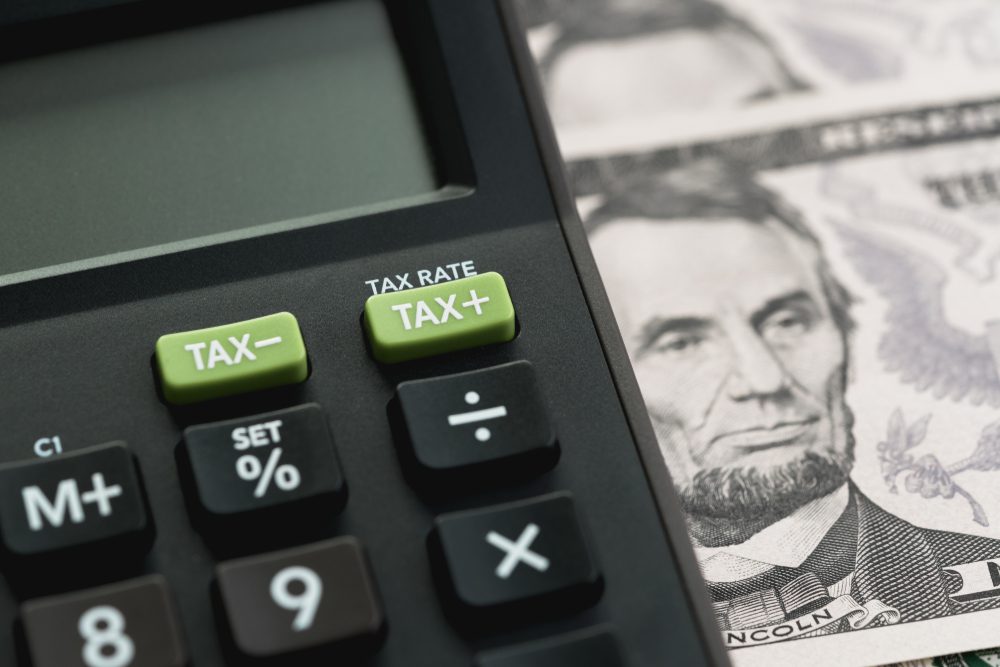Advertiser Disclosure: Many of the companies featured here provide compensation to us. This is how we maintain our free service for consumers. Compensation, along with hours of in-depth editorial research, determines where & how companies appear below.
How Does a Tax Rate Work?
The rate at which individuals or corporations are taxed is called a tax rate. There is a progressive tax rate system in place in the United States, both at the federal level and in many states, where the percentage of tax charged increases with the amount of taxable income the individual or entity earns. The amount of tax collected from taxpayers with higher incomes increases when the rate of taxation is progressive.
Here are some things you should know
- There are two types of tax rates: individual and corporate.
- There is a progressive tax rate in the U.S., with a higher percentage of tax levied on higher incomes.
- Tax rates are applied in marginal increments in the U.S., so taxpayers usually pay a lower effective rate than bracket rates.
- There are some countries that charge a flat tax rate or a regressive tax rate.
How to Understand Tax Rates

It is common for the government to tax its residents to help build and maintain infrastructure. A tax rate is applied to a taxpayer’s money received in the U.S. and many other countries around the world to benefit the nation, society, and all those living in it.
Taxpayers’ earnings are taken and remitted to the government based on their wage or salary, their investment income, dividends and interest, and capital gains.
A tax rate refers to the percentage of income tax owed to a state, federal, and sometimes local government. Some municipalities impose city or regional income taxes in addition to state and federal income taxes.
Depending on the marginal tax bracket in which an individual falls, the tax rate will be applied to their earnings. As a result of its progressive tax system, the U.S. government uses a marginal tax rate of 10% on each dollar of taxable income above a predetermined income limit.
Calculation of effective tax rates
Depending on whether an individual is single, the head of a household, married filing separately, or married filing jointly, the threshold for each tax rate varies
Using the same example, a person earning $62,000 in 2023 will pay taxes as follows: 10% on the first $11,000, 12% on the next $33,725 (the excess over $11,000 up to $44,725), and 22% on the remaining $17,275 (the excess over $44,725 up to $95,375).
The first $11,000 earned by another individual will be taxed at 10%; the next $33,725 will be taxed at 12%; the next $50,650 will be taxed at 22% (from $44,725 to $95,375); and the remaining $64,625 will be taxed at 24% (from $95,375 to $182,100), resulting in $31,800 in total.
As a result, a single taxpayer who falls into the third marginal tax bracket will pay less tax than a single taxpayer who falls into the fourth or higher marginal tax bracket.
Tax rates on different portions of income are progressively higher at the marginal level.
Due to the marginal tax calculation, these taxpayers do not pay flat rates of 22% and 24% on all of their income, even though they fall in the third and fourth marginal brackets.
A person with a $62,000 income would pay 22% of it, while a person with a $160,000 income would pay 24% of it, which is $38,400. Therefore, individual A’s effective rate is 14.4% ($8,947.50 x $62,000), while individual B’s rate is 19.9% ($31,800 x $160,000).
In a given tax year, these effective tax rates represent the actual percentage a tax is assessed.
Capital Gains and Sales Tax Rates

Earned income and corporate profits aren’t the only ones affected by taxes. There are also other ways in which taxes can be applied, such as sales taxes on goods and services, real property taxes, and short-term capital gains taxes. Upon the purchase of certain goods and services from a retailer, a sales tax is applied to the price of the commodity. Sales tax rates vary from state to state since states are responsible for governing them. For example, Georgia has a 4% state sales tax rate, while California has a 7.25% tax rate.
Capital gains and dividends are also taxed by the government due to the fact that additional income from investments is considered income. Investors pay a different tax rate when the value of an investment rises and it is sold for a profit, depending on how long they held the security. Investors who make short-term investments (investments held for one year or less) pay the same tax as ordinary income tax on capital gains. As a result, someone who is in the 22% marginal tax bracket will pay 22% on short-term capital gains and 23% on long-term capital gains.
Individuals with taxable income below $44,625 will pay no tax on profits from investments held longer than a year. For the taxable year 2023, individuals with taxable income below $44,625 will pay no tax. Capital gains are taxed at 15% on individuals with taxable income between $44,625 and $492,300, and at 20% on investors above $492,300.
The tax rates for qualified dividends are the same as those for long-term capital gains. The tax rates for non-qualified dividends are the same as those for short-term capital gains.
Foreign Tax Rates
A regressive tax schedule is one in which the rate increases as the taxable amount decreases. Some countries use progressive tax rates, while others use regressive or proportional tax rates.
In countries with proportional or flat tax rates, all taxable amounts are taxed at the same rate, no matter how much money they make. Bolivia and Greenland are examples of such countries.

